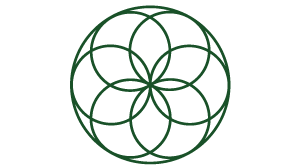Cluster: Reason quantitatively and use units to solve problems
Standard: Use units as a way to understand problems and to guide the solution of multi-step problems; choose and interpret units consistently in formulas; choose and interpret the scale and the origin in graphs and data displays.*
Degree of Alignment:
Not Rated
(0 users)
Cluster: Reason quantitatively and use units to solve problems
Standard: Define appropriate quantities for the purpose of descriptive modeling.*
Degree of Alignment:
Not Rated
(0 users)
Cluster: Reason quantitatively and use units to solve problems
Standard: Choose a level of accuracy appropriate to limitations on measurement when reporting quantities.*
Degree of Alignment:
Not Rated
(0 users)
Cluster: Interpret the structure of expressions.
Standard: Interpret expressions that represent a quantity in terms of its context.*
Degree of Alignment:
Not Rated
(0 users)
Cluster: Solve equations and inequalities in one variable
Standard: Solve linear equations and inequalities in one variable, including equations with coefficients represented by letters.
Degree of Alignment:
Not Rated
(0 users)
Cluster: Define trigonometric ratios and solve problems involving right triangles
Standard: Use trigonometric ratios and the Pythagorean Theorem to solve right triangles in applied problems.
Degree of Alignment:
Not Rated
(0 users)
Cluster: Find arc lengths and areas of sectors of circles
Standard: Derive using similarity the fact that the length of the arc intercepted by an angle is proportional to the radius, and define the radian measure of the angle as the constant of proportionality; derive the formula for the area of a sector.
Degree of Alignment:
Not Rated
(0 users)
Cluster: Explain volume formulas and use them to solve problems
Standard: Give an informal argument for the formulas for the circumference of a circle, area of a circle, volume of a cylinder, pyramid, and cone. Use dissection arguments, Cavalieri’s principle, and informal limit arguments.
Degree of Alignment:
Not Rated
(0 users)
Cluster: Explain volume formulas and use them to solve problems
Standard: Use volume formulas for cylinders, pyramids, cones, and spheres to solve problems.*
Degree of Alignment:
Not Rated
(0 users)
Cluster: Visualize relationships between two-dimensional and three-dimensional objects
Standard: Identify the shapes of two-dimensional cross-sections of three-dimensional objects, and identify three-dimensional objects generated by rotations of two-dimensional objects.
Degree of Alignment:
Not Rated
(0 users)
Cluster: Apply geometric concepts in modeling situations
Standard: Use geometric shapes, their measures, and their properties to describe objects (e.g., modeling a tree trunk or a human torso as a cylinder).*
Degree of Alignment:
Not Rated
(0 users)
Cluster: Apply geometric concepts in modeling situations
Standard: Apply concepts of density based on area and volume in modeling situations (e.g., persons per square mile, BTUs per cubic foot).*
Degree of Alignment:
Not Rated
(0 users)
Cluster: Apply geometric concepts in modeling situations
Standard: Apply geometric methods to solve design problems (e.g., designing an object or structure to satisfy physical constraints or minimize cost; working with typographic grid systems based on ratios).*
Degree of Alignment:
Not Rated
(0 users)
Cluster: Summarize, represent, and interpret data on two categorical and quantitative variables
Standard: Summarize categorical data for two categories in two-way frequency tables. Interpret relative frequencies in the context of the data (including joint, marginal, and conditional relative frequencies). Recognize possible associations and trends in the data.*
Degree of Alignment:
Not Rated
(0 users)
Cluster: Summarize, represent, and interpret data on two categorical and quantitative variables
Standard: Represent data on two quantitative variables on a scatter plot, and describe how the variables are related.*
Degree of Alignment:
Not Rated
(0 users)
Cluster: Interpret linear models
Standard: Interpret the slope (rate of change) and the intercept (constant term) of a linear model in the context of the data.*
Degree of Alignment:
Not Rated
(0 users)
Cluster: Interpret linear models
Standard: Compute (using technology) and interpret the correlation coefficient of a linear fit.*
Degree of Alignment:
Not Rated
(0 users)



Comments